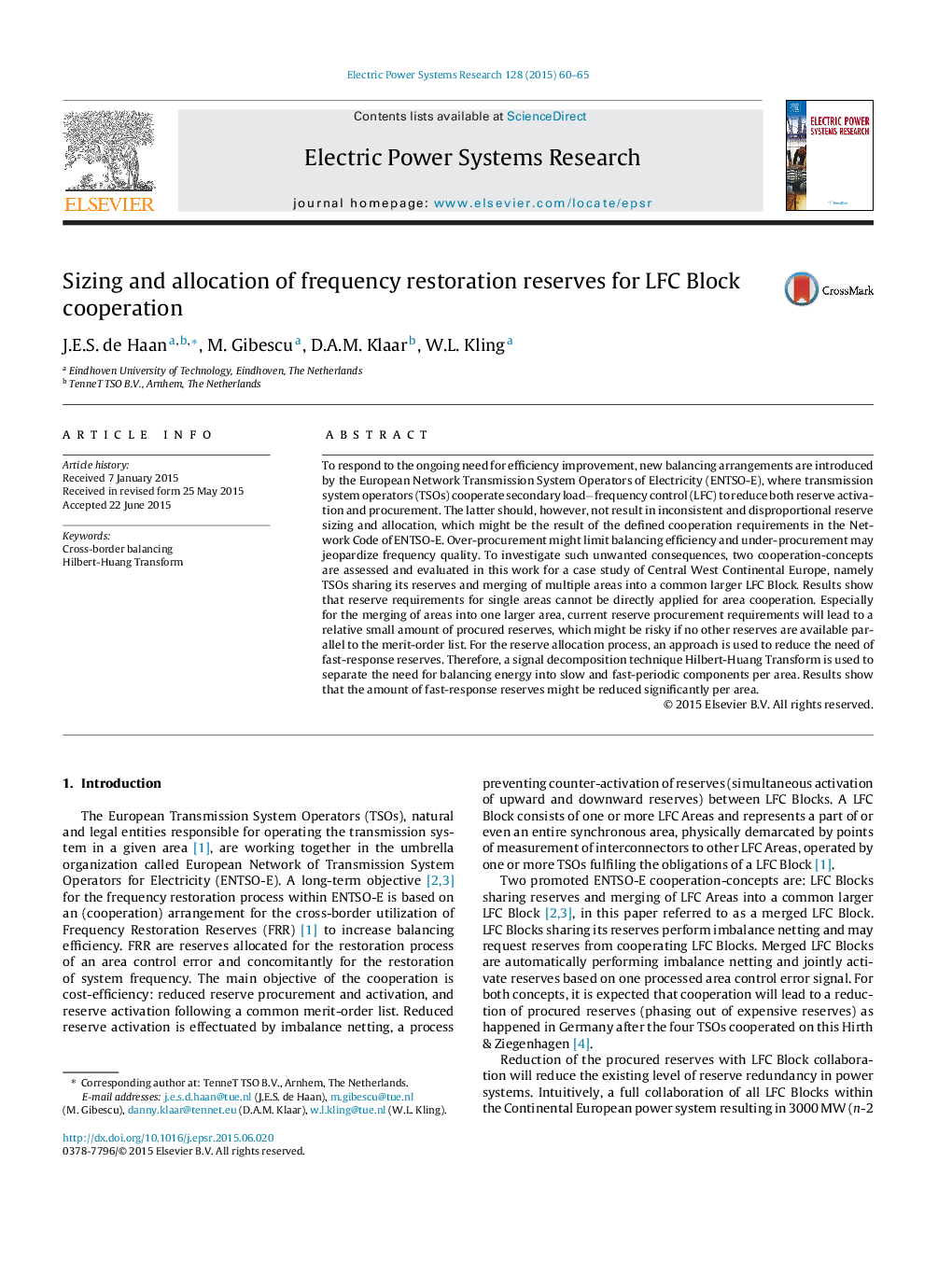| Article ID | Journal | Published Year | Pages | File Type |
|---|---|---|---|---|
| 7112626 | Electric Power Systems Research | 2015 | 6 Pages |
Abstract
To respond to the ongoing need for efficiency improvement, new balancing arrangements are introduced by the European Network Transmission System Operators of Electricity (ENTSO-E), where transmission system operators (TSOs) cooperate secondary loadâfrequency control (LFC) to reduce both reserve activation and procurement. The latter should, however, not result in inconsistent and disproportional reserve sizing and allocation, which might be the result of the defined cooperation requirements in the Network Code of ENTSO-E. Over-procurement might limit balancing efficiency and under-procurement may jeopardize frequency quality. To investigate such unwanted consequences, two cooperation-concepts are assessed and evaluated in this work for a case study of Central West Continental Europe, namely TSOs sharing its reserves and merging of multiple areas into a common larger LFC Block. Results show that reserve requirements for single areas cannot be directly applied for area cooperation. Especially for the merging of areas into one larger area, current reserve procurement requirements will lead to a relative small amount of procured reserves, which might be risky if no other reserves are available parallel to the merit-order list. For the reserve allocation process, an approach is used to reduce the need of fast-response reserves. Therefore, a signal decomposition technique Hilbert-Huang Transform is used to separate the need for balancing energy into slow and fast-periodic components per area. Results show that the amount of fast-response reserves might be reduced significantly per area.
Keywords
Related Topics
Physical Sciences and Engineering
Energy
Energy Engineering and Power Technology
Authors
J.E.S. de Haan, M. Gibescu, D.A.M. Klaar, W.L. Kling,
